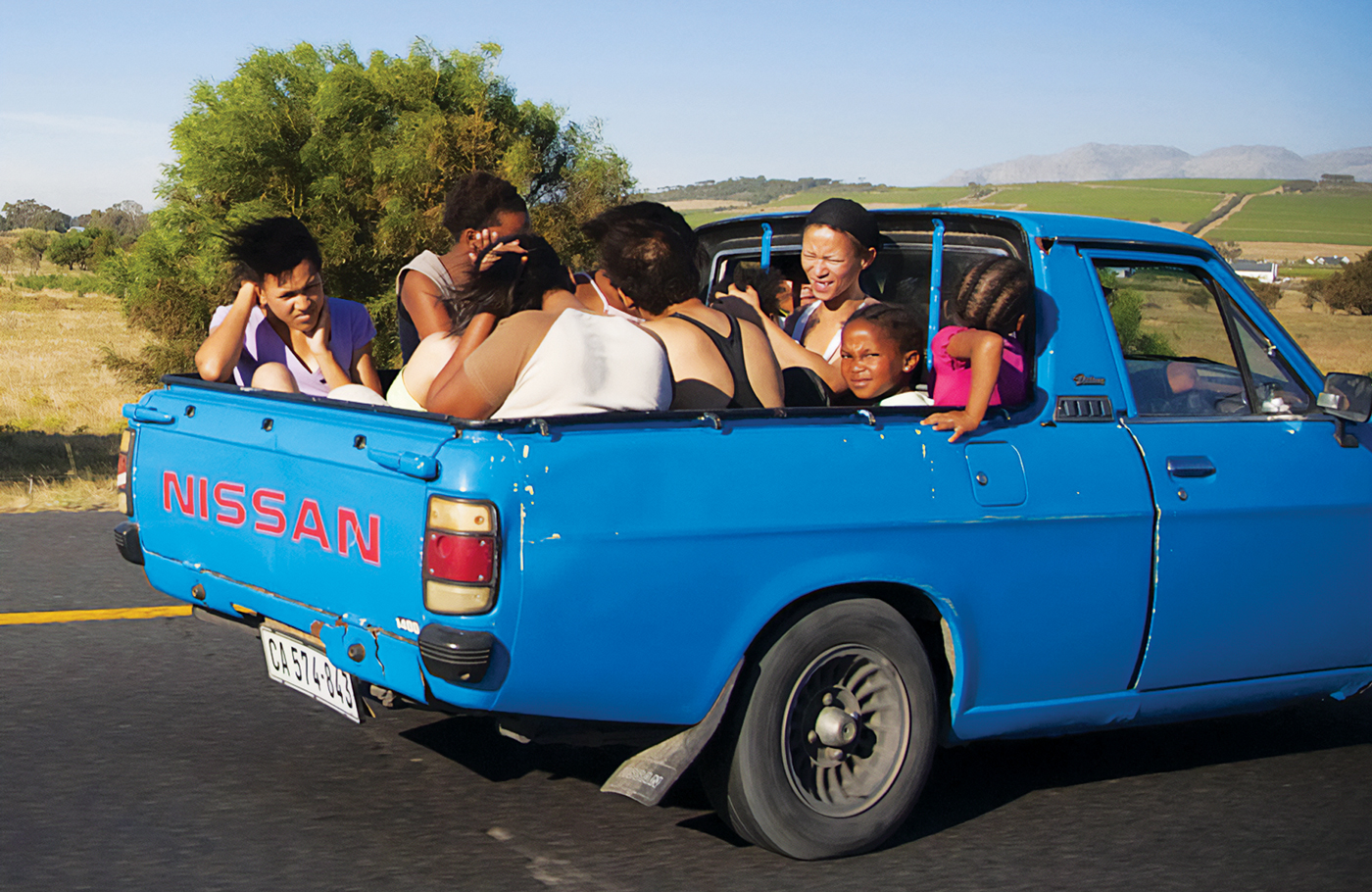Transporting people in a goods compartment
Transporting people in a goods compartment
It’s something we see daily in South Africa: people on the back of bakkies and trucks. But is it legal to convey people in a goods compartment on a public road?
According to the Road Freight Association (RFA), a goods compartment is not defined in the National Road Traffic Act, Act 93 of 1996. As such, the ordinary meaning of the word applies – in the context of road vehicles this would mean that portion of a vehicle that is intended or adapted for the carrying of goods (movable property).
Regulation 247 of the National Road Traffic Act, Act 93 of 1996 and its regulations talk to the circumstances when people may be carried in a goods vehicle. The portion in which people are conveyed must be enclosed in a manner – and with a sufficiently strong material – to prevent the person(s) from falling from the vehicle when it is in motion. In the case of people seated in a goods vehicle, that portion must be enclosed to a minimum height of 350mm above the surface upon which persons sit, and in the case of standing persons to a minimum height of 900mm above the surface upon which they are standing.
It is not permissible to convey tools or goods in the same space as people in a goods vehicle, unless there is a partition separating them from the goods. This is done to ensure that people do not sustain injuries from goods shifting under harsh braking, or in the event of a crash – when loose goods and tools have the potential to become lethal projectiles or crush people. The personal effects of those being conveyed are not considered tools or goods, and as such may be conveyed with them in their portion of the goods vehicle.
Schoolchildren may not be conveyed for reward in a goods compartment in terms of regulation 250 (1). Any other persons may not be conveyed for reward in a goods compartment in terms of regulation 250 (2), provided that the provision of sub-regulation 250 (2) shall not apply to a vehicle which complies with the provisions of the National Land Transport Act.
Summary
It is permissible to convey people in the goods compartment of your bakkie or heavy goods vehicle, provided the load area used for them and their personal effects is adequately enclosed so that people do not fall out of the vehicle. If the vehicle carries goods and people at the same time, there must be a partition separating the persons from the tools or goods. The conveyance of people in the goods compartment may not be undertaken for reward in instances where school children, or “other persons” are conveyed, however the “other persons” for reward provision may not apply if the vehicle complies with the provisions of the National Land Transport Act, which applies to public (passenger) transport (buses and minibuses).


Regulations and definitions used as references extracted from the National Road Traffic Act, Act 93 of 1996 as amended, and published by Lexis Nexis as at issue 66 updated to 1 December 2023
Regulation 247: Circumstances under which persons may be carried on goods vehicle
No person shall operate on a public road a goods vehicle conveying persons unless that portion of the vehicle in which such persons are being conveyed is enclosed to a height of –
- at least 350 millimetres above the surface upon which such person is seated; or
- at least 900 millimetres above the surface on which such person is standing,
in a manner and with a material of sufficient strength to prevent such person from falling from such vehicle when it is in motion.
Provided that no person shall be conveyed in the goods compartment together with any tools or goods, except their personal effects, unless that portion in which such persons are being conveyed is separated by means of a partition, from the portion in which such goods are being conveyed.
Regulation 250: School children and persons not to be conveyed in goods compartment of a motor vehicle for reward
- No person shall on a public road convey school children in the goods compartment of a motor for reward.
- No person shall convey any other person in the goods compartment of a motor vehicle for reward: Provided that the provisions of this sub-regulation shall not apply in respect of a vehicle which complies with the provisions of the NLTA.
Definitions
“goods” means any movable property;
“goods vehicle” means a motor vehicle, other than a motorcycle, motor tricycle, motor car, minibus or bus, designed or adapted for the conveyance of goods on a public road and includes a truck-tractor, haulage tractor, adaptor dolly, converter dolly and breakdown vehicle;
“motor vehicle” means any self-propelled vehicle and includes –
- a trailer; and
- a vehicle having pedals and an engine or an electric motor as an integral part thereof or attached thereto and which is designed or adapted to be propelled by means of such pedals, engine or motor, or both such pedals and engine or motor, but does not include –
- any vehicle propelled by electrical power derived from storage batteries and which is controlled by a pedestrian; or
- any vehicle with a mass not exceeding 230 kilograms and specially designed and constructed, and not merely adapted, for the use of any person suffering from some physical defect or disability and used solely by such person;
“public road” means any road, street or thoroughfare or any other place (whether a thoroughfare or not) which is commonly used by the public or any section thereof or to which the public or any section thereof as a right of access, and includes –
- the verge of any such road, street or thoroughfare;
- any bridge, ferry or drift traversed by any such road, street or thoroughfare; and
- any other work or object forming part of or connected with or belonging to such road, street or thoroughfare.
Published by
Focus on Transport
focusmagsa




